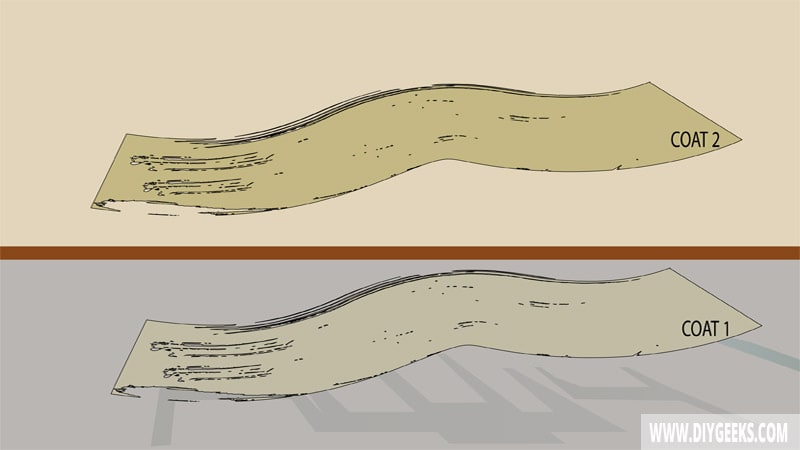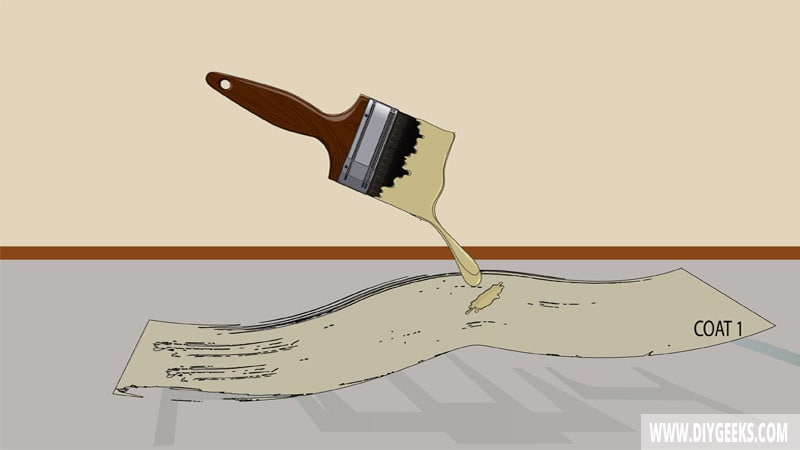You need between 1 and 2 concrete sealer coats for proper coverage and durability. You need one (1) coat for indoor surfaces, and two (2) coats for outdoor concrete surfaces.
The concrete sealer number of coats matters as it determines the finish type, durability, and strength. To know if you need another coat, inspect the finish.
If you apply too many coats, the finish remains wet longer and turns sticky or tacky. If you don’t apply too many coats, the finish will have poor coverage and durability.
Why Does The Concrete Sealer Number of Coats Matter?

The concrete sealer number of coats matters as it determines the finish type, durability, strength, dry time, and color shade (for tinted finishes). In simple words, it determines how well the sealer protects the surface.
Concrete sealers produce a moisture-resistant coating over the surface preventing water and moisture absorption, and protect the surface from different elements.
If you apply the right concrete sealer number of coats, the finish becomes durable and strong, dries in time, and has a consistent color shade (for tinted finishes).
If you don’t apply enough concrete sealer coats, the finish will have poor coverage, durability, and strength. A concrete sealer with poor coverage or durability won’t protect surfaces from water or moisture and will get washed off if exposed to constant water.
If you apply too many concrete sealer coats, the finish takes longer to dry, remains wet for longer, turns sticky or tacky, and can peel off. The more coats you apply, the longer the finish takes to dry as there’s more solvent to evaporate from the coating which increases the overall dry time.
For tinted concrete sealers, the color shade will become too deep if you apply too many coats, and the color shade will become too light if you don’t apply enough coats.
How To Know If You Need Another Concrete Sealer Coat?

To know if you need another concrete sealer coat, inspect the finish. You need another coat if the finish is too thin, has poor coverage, or it has a light color shade (for tinted sealers).
You don’t need another coating if the sealer finish has good coverage, has formed a moisture-resistant layer over the surface, and has the right color shade.
The first concrete sealer is usually absorbed by the concrete surface, while the second coating stays over the surface and creates a moisture-resistant layer that prevents water absorption.
However, not all concrete types absorb the same sealer amount — sometimes you must apply a thicker or thinner coating than usual.
What Happens If You Apply Too Many Concrete Sealer Coats?
If you apply too many concrete sealer coats, the finish takes longer to dry, remains wet longer, turns sticky or tacky, can peel off, and the finish becomes too blurry or its color shade is too deep.
The concrete sealer dries through solvent evaporation — if you apply too many coats too fast, the solvent gets trapped between two coats and prevents both of them from drying, creating a wet sticky finish.
If the sealer coating is wet for too long, it accumulates dust and dirt and can contaminate the finish.
Also, the concrete sealer finish will detach from the surface and peel off gradually if it’s too thick.
What Happens If You Don’t Apply Enough Concrete Sealer Coats?
If you don’t apply enough concrete sealer coats, the finish will have poor coverage, durability, and strength, and won’t protect the concrete surface underneath from moisture, water, or other damages.
The first sealer coating is absorbed by the concrete surface, while the second coating creates a moisture-resistant layer over the surface and prevents water and moisture penetration.
But, if you don’t apply enough coats, most concrete sealer will be absorbed by the surface so it won’t produce a protective layer or protect the surface.
How Long Does Concrete Sealer Take To Dry Between Coats?
Concrete sealer takes around 4 hours to dry between coats. Some concrete sealer types take longer to dry — check the user’s guide for the exact dry time.
The exact dry time is determined by the sealer type, surface type, room humidity and temperature, and coat viscosity.
For instance, concrete sealer dries faster if you apply thin coats and the room temperature is higher than 50°F (10°C).
If you re-coat concrete sealer too soon, the finish remains wet longer and turns sticky (or tacky). Ensure to wait until the first coating becomes hard (or rigid) and the solvent evaporates before re-coating it.


